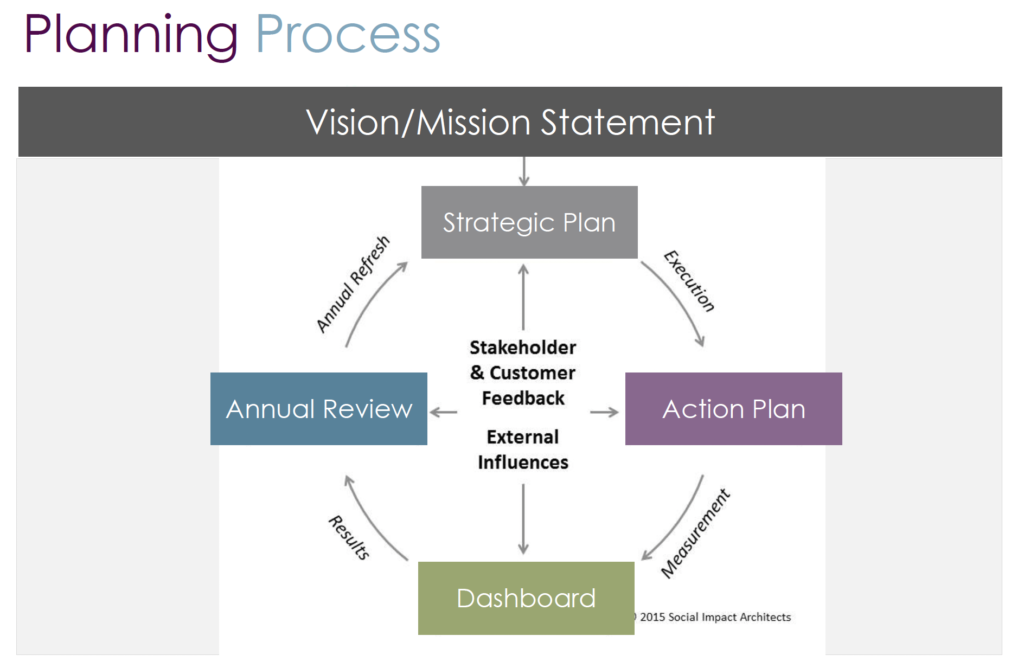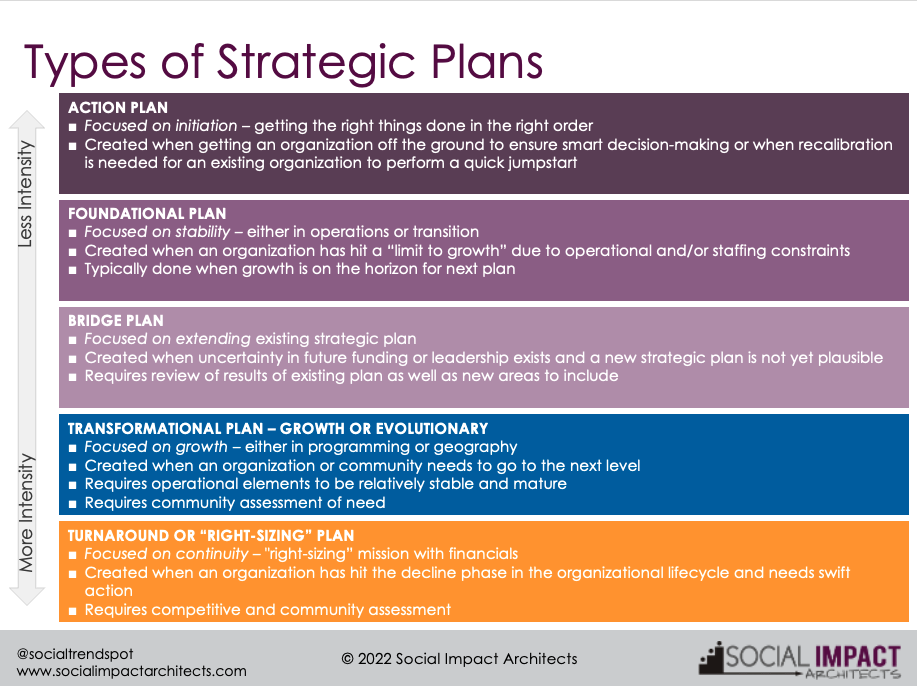 With the new year in full swing, we are getting lots of calls on strategic planning and retreats. We often say that the point of a strategic plan isn’t to create a piece of paper; it is about creating clarity and momentum for your organization. So, we believe this rise in interest is very much connected to using 2022 as a golden opportunity to reset post-pandemic and incorporate some of the shifts that have occurred in the past few years. Many nonprofits also use strategic planning as a tool to ensure their organization stays relevant and impacts the communities and clients they serve. To help you make the most of your strategic planning conversations, we collected your most pressing questions and quizzed our staff for their best answers.
With the new year in full swing, we are getting lots of calls on strategic planning and retreats. We often say that the point of a strategic plan isn’t to create a piece of paper; it is about creating clarity and momentum for your organization. So, we believe this rise in interest is very much connected to using 2022 as a golden opportunity to reset post-pandemic and incorporate some of the shifts that have occurred in the past few years. Many nonprofits also use strategic planning as a tool to ensure their organization stays relevant and impacts the communities and clients they serve. To help you make the most of your strategic planning conversations, we collected your most pressing questions and quizzed our staff for their best answers.
How often should a strategic plan be created?
Five years used to be the standard. In the last few years, we have seen a definite shift to a shorter time span of two or three years. However, we recommend that every organization review their plan quarterly, track progress toward goals and reassess their relevancy and timing in terms of any environmental shifts. In the last year, we have even shifted some of our clients toward a “battleplan” to provide a short-term action plan. We always highly recommend an annual strategic planning “refresh” to examine internal and external dynamics that could impact the organization.
What type of planning process should we follow? Is it always the same?
It depends. First, if your last strategic planning process was extensive and your environment has not shifted much, you can do a “refresh” and focus more of your attention on execution rather than planning. However, if your environment has shifted and you need objective feedback to make sure you are on the right track, we strongly encourage a more extensive review of internal and external research to build a new plan. Second, your planning process should be determined by how well you have accomplished what you have set out in your existing plan. If you have accomplished a majority of the goals in your existing strategic plan, you most likely have a good planning as well as tracking process that includes some form of dashboard. If you have not accomplished most of your strategic plan’s goals or you don’t use the strategic plan to guide decision-making, you may want a more extensive planning process to recalibrate. You may need a third party to help develop a change management process that will lead to better planning, prioritization and execution of your organization’s key goals.
Are there different types of plans?
Yes. Depending on where you are in the nonprofit lifecycle, you need to match the plan to your needs, budget and growth aspirations. Sometimes, it is easy to determine the best plan for your organization. But, often, we find that an initial internal diagnostic survey is essential before formalizing a final plan direction. This survey helps us not only determine what type of plan to pursue, but it also guides our decisions about the planning process.
What type of research should the planning process include?
Whatever process you follow should include an objective internal and external assessment. It should cover the core areas of a high-impact (impact, branding) and high-performance (revenue, governance, operations) organization and describe the connection between strategy and culture. It can include a variety of tools – surveys, focus groups, comparable/best practice research and interviews. As with all data collection, you have to consider the value of the tool relative to its cost. Ask yourself, where will you get your greatest insights? Who needs to be involved? Ideally, you use both quantitative and qualitative analysis to cross-reference and validate themes, and to build a concrete argument around prioritization. We typically start by using the internal survey we conducted to determine the type of plan to also benchmark against other nonprofits and inform decisions about where to start, where to focus and how deep to go.
Who should the planning process include?
We recommend a joint process between the board and staff, but this can include many possibilities and variations. It is important to get buy-in into the final priorities from all parties. We find it very helpful for board and staff members to “vote” on their top priorities to narrow the plan’s focus and help prioritize timelines. Sometimes we do a joint board-staff retreat and sometimes we do them separately – it all depends on where the organization is in its lifecycle and what its specific needs are.
How long should the planning process last?
The best timeline is three to five months (see our sample timeline) from start to finish – depending on the complexity of the organization and the plan needs. We always remind organizations that it is important to stagger the timeline to prevent planning fatigue and to ensure adequate time and energy for the execution of the plan at the end. If you do it right, you should be energized at the end of the process and ready to execute the plan.
If you have questions specific to your strategic planning situation, please do not hesitate to reach out to us via our Contact Page. We also welcome your feedback.


